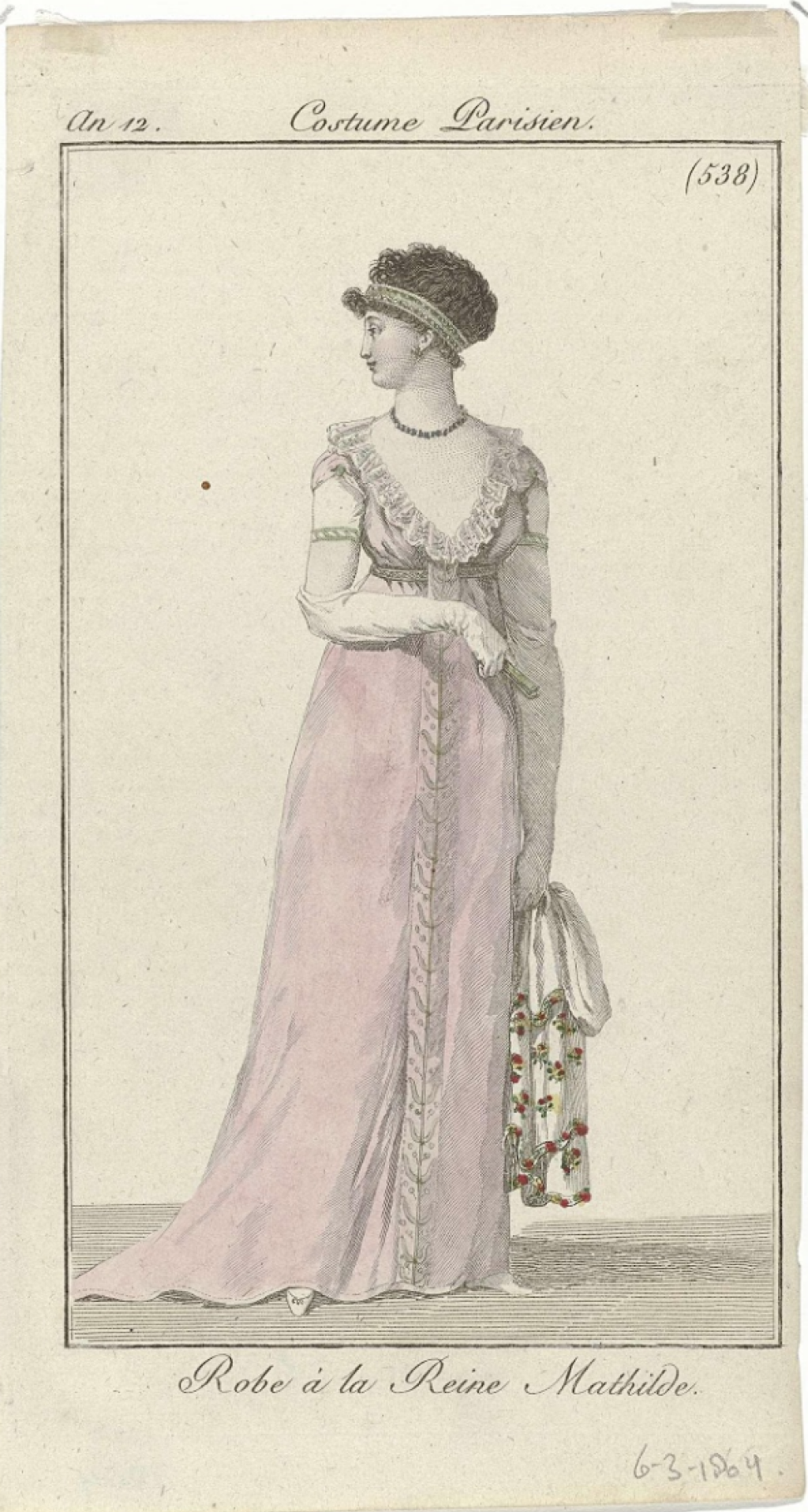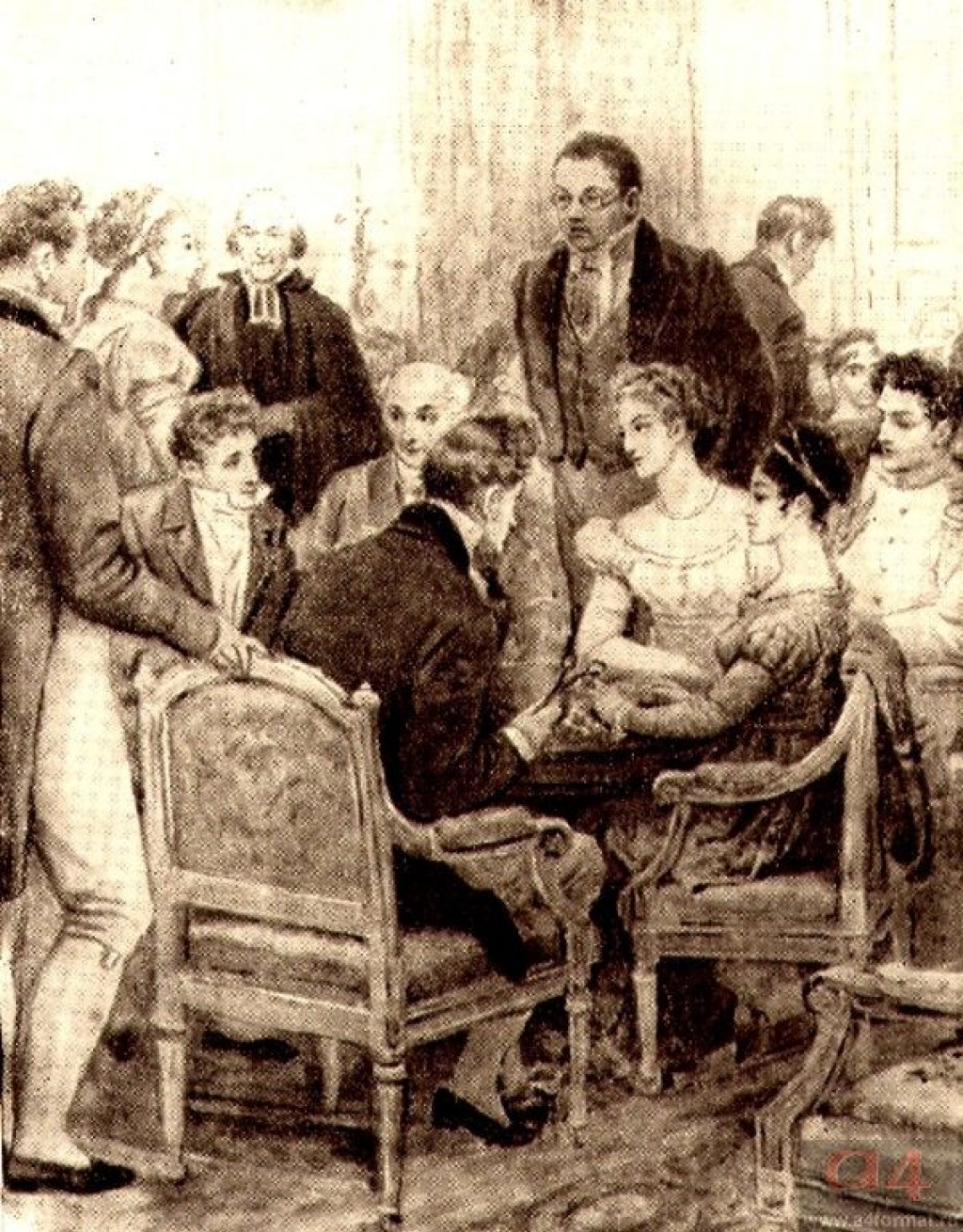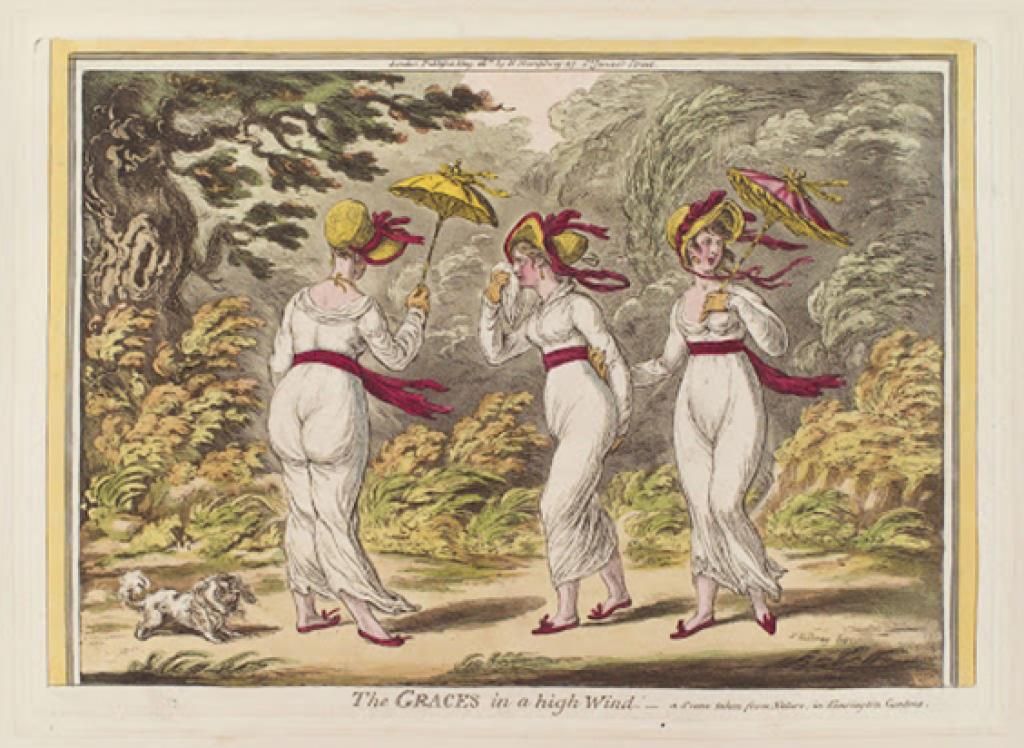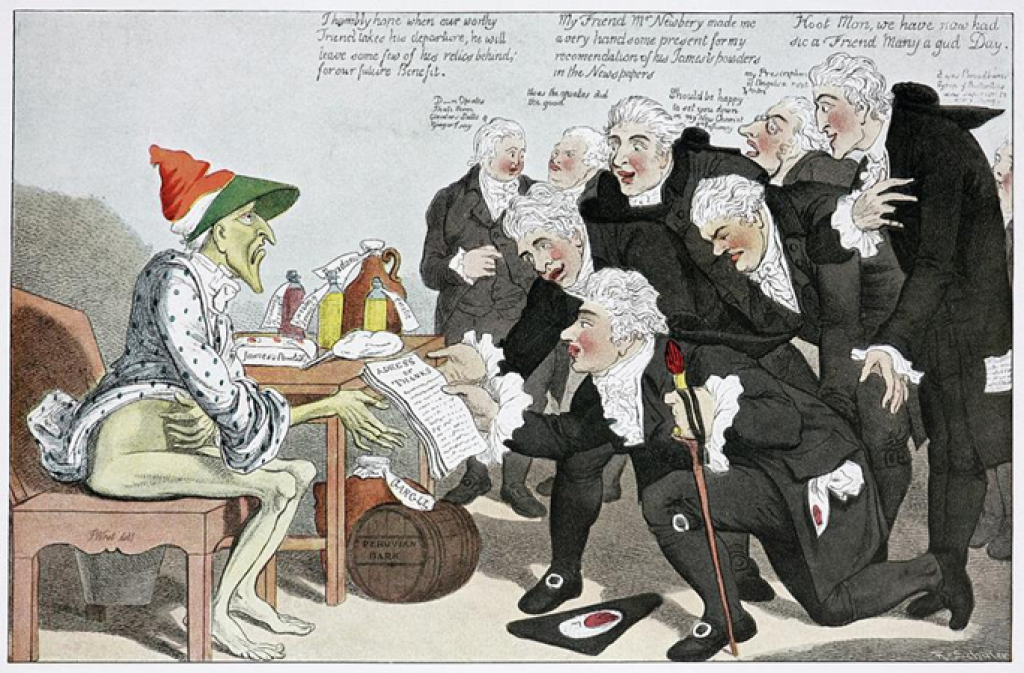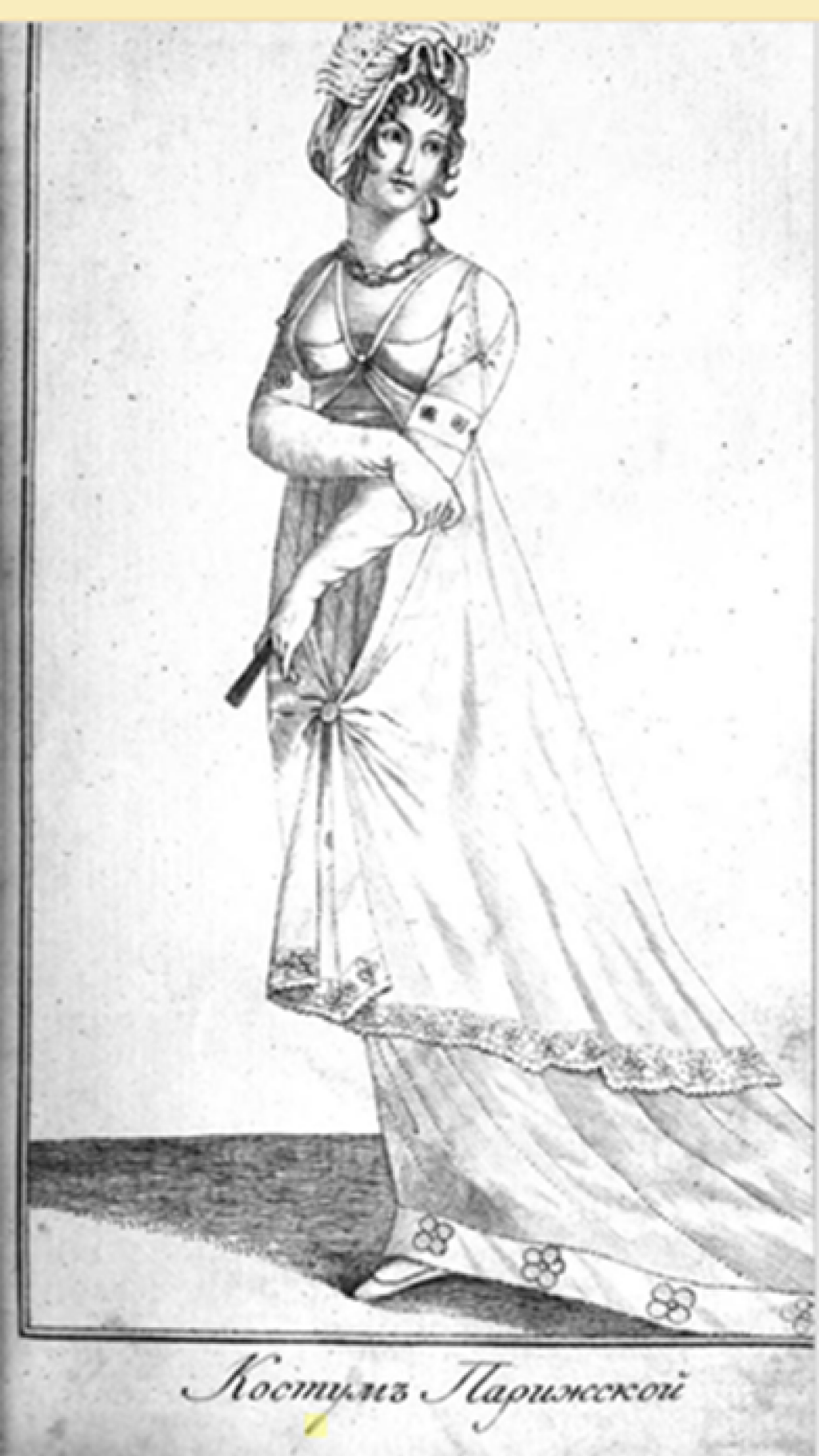Ilya Vinitsky is a Professor in the Department of Slavic Languages and Literatures at Princeton University. His fields of expertise are Russian Romanticism and Realism, the history of emotions, and nineteenth- century intellectual and spiritual history.
Translated by Emily Wang, Assistant Professor in the Department of German and Russian Languages and Literatures at the University of Notre Dame.
This piece originally ran on Polka.Academy on 20 March.
The hooves clattered.
As if singing:
— Crib.
Grab.
Grub.
Grippe.
—From Vladimir Mayakovsky (adjusted)
What famous work of literature begins with a reference to the flu? Exactly – Tolstoy's War and Peace. The Russian epic begins with a French-language tirade about Bonaparte the Antichrist uttered by “the well-known” Anna Pavlova Scherer, maid-of-honor and favorite of the Empress Maria Feodorovna, when she meets the important and high-ranking Prince Vasily in July, 1805. “Anna Pavlovna,” the narrator tells us, “had had a cough for some days. She was, as she said, suffering from la grippe; grippe being then a new word in St. Petersburg, used only by the elite.” Each of the select guests invited to her small party received identical notes in French: “If you have nothing better to do, Count [or Prince], and if the prospect of spending an evening with a poor invalid is not too terrible, I shall be very charmed to see you tonight between 7 and 10—Annette Scherer.” The elite of society came to visit a “sick” woman, unafraid of the consequences of her affected cough.
The Tolstoy scholar Evelina Zaidenshnur noted long ago that the writer borrowed the motif of the “fashionable” cough from an ironic note in Parisian Fashions published in The Herald of Europe in 1804. (That year’s copy of the journal may be found in Tolstoy’s Yasnaya Polyana library).
From now on all fops are forbidden from complaining of imaginary diseases, the vapors, and migraines: in good society complaining about such maladies has gone out of fashion, only coughing is allowed. The sniffles are also fashionable, but only for a beautiful woman who wants to give it a name, since everyone’s already sick of the words coqueluche, grippe, and so on.
In Zaidenshnur’s opinion, Tolstoy allowed himself to transfer this very same Parisian fashion to Russia in the summer of 1805. Another commentator notes that the everyday historical context of Anna Scherer's “grippe” was the epidemic that raged in Europe from 1799 to 1805. This note requires some clarification. The epidemic that began in Russia at the very end of the eighteenth century spread to Germany in 1802 and, in the winter of 1802-1803, reached its peak in France, after which it spread to England, Spain, and the United States.
It must be said that, in the eighteenth century and at the beginning of the nineteenth, this disease went by many different names in different countries and even different provinces: influenza (an Italian word that gained prominence during the epidemics of 1729 and 1732), epidemic catarrh, the catarrh fever, miasmic catarrh, bilious catarrh, the spring epidemic, epidemic fever. As the nineteenth century German physician Edward Martini observed, in Italy this disease was called mazuchi, in Spain cocculucas, in France coquluche (to relieve headaches, the head was often covered with a hood [in French, “cagoule”]), in Germany Ziep [presumably from the verb “ziepen,” to cause a stinging pain], Schafhusten, Schafkranheit, spanischer Pips. They also called it the northern, Chinese, or Siberian fever, the dog’s disease, the pauper’s disease, and the vagrant’s disease.
But the most common term was a word that had already come into usage in the 1740s, la grippe, which nineteenth-century etymologists linked to both French and German verbs for “to seize,” as well as the Russian verb “хрипеть [to be hoarse]” (in Germany they sometimes called this kind of illness “the Russian disease,” russische Krankheit), as well as with the French name for the insect (la grippe) that superstitious people blamed for the spread of the disease.
According to Trésor de la langue française, the word “grippe” initially meant “caprice, whim.” In 1768, Voltaire wrote from Ferney that the flu (“grippe”) then traversing the world had gripped his old body. In 1782, Catherine the Great apprised her traveling son and daughter-in-law of an epidemic of the coughing disease in the Russian Empire:
Imaginez Vous quelle belle harmonie, que tout un empire qui tousse et éternue; je prie le ciel dе Vous en préserver et рour le coup je suis très-aise, que Vous ne sоуez pas ici. L'on dit que l'année рassée à Рaris l'on appelait cela la gripe.
Historians of Russian literary language confirm that this word indeed seemed new in Russia at the beginning of the nineteenth century. The first known usage is from 1799, in the youthful diary of the scholar A. Kh. Vostokov; in the fall and winter of 1799, the epidemic, which had originated in Siberia, gripped Moscow, St. Petersburg and Kronstadt and badly infected Emperor Paul I. Later on, the virus progressed to Riga, Vilnius, and Warsaw. It’s worth noting that, for a long time, the Russian version of the word took a feminine ending (for example, “гриппа доканала его [the grippa finished him off]), which also testifies to its French origins.
In March 1803, N. M. Karamzin’s journal The Herald of Europe told its readers of a cruel pestilence that had almost paralyzed life in the French capital:
The disease now running rampant in Paris (la grippe) is most dangerous for the elderly and for the very young. Parisian Physicians ascribe it to the frequent and severe atmospheric changes of this winter. They should have published a description of this disease with various observations of its course to calm down the public, which had been considering it some kind of plague. Bonaparte, having arrived at the Tuileries Palace from Saint-Cloud, has been seen only with relatives and with Government Officials. Now parades have been cancelled due to the severe cold, which, being between 10 and 15 degrees [Réamur] every day, has been unbearable for the French. The Seine is frozen and some sort of silence reigns in the city. The theaters are empty, but the coffee houses are full of people warming themselves at the fireplaces.
Among the ill was Napoleon’s wife Josephine. Several celebrities died of the disease, including the famous neoclassical poet and critic Jean-François de La Harpe. Newspapers and journals constantly wrote about the disruptive force of this epidemic, while government statistics estimated the death toll at more than 4,000 for the winter. The most gruesome date was February 6, when 202 succumbed to la grippe. Several medical tracts and religious brochures dedicated to la grippe appeared. The German composer Johann Friedrich Reichardt, in his famous 1803 Letters from Paris, concluded a lengthy description of Paris in the throes of the disease with an ironic-moralistic “song” written in honor of la grippe. Pushkin’s famous “hymn to the Plague” belongs to the same genre:
Chanson sur la grippe. Air: Femmes, voulez vous éprouver
Song of the Flu [
la grippe
]. To the Tune of "Femmes, voulez vous éprouver [Ladies, would you like to find out…]”
Il règne, dit-on, dans Paris,
Une étonnante maladie;
La grippe est son nom, mes amis.
Chacun doit craindre sa furie,
Car j’ai vu gripper un époux,
Tyran de sa femme jolie.
Si la grippe en veut aux jaloux...
Ah que n'est ce une épidémie!
Lucile voit le jeune Armand
Lui jurer l’amour le plus tendre;
Hélas, son cœur fut inconstant
Et la grippe vint la surprendre.
Amis, tremblons pour la beauté;
Car si l’affreuse maladie
Attaquait l'infidélité...
Ah! grand Dieu, quelle épidémie!
They say there reigns in Paris
A shocking malady;
It’s called la grippe, my friends.
We all should fear its fury
For I saw a husband gripped
Who tyrannized his pretty wife.
If the grippe punishes the jealous…
What an epidemic this must be!
Lucile sees young Armand,
To swear to him the tenderest love;
Alas, her heart was fickle,
And the flu crept up on her a surprise.
Tremble, my friends, for beauty;
For if this awful malady
Attacks infidelity…
Oh! Great God, what an epidemic!
The tune for this song, “Femmes, voulez-vous éprouver?”, comes from a popular one-act opera by Jean-Pierre Solié (1755-1812): “Le Secret,” first performed in 1796. In the age of Directory and the Consulate, the tune was used for many chansons, including those referring to the great Bonaparte and his wife (Histoire de Bonaparte, consul de la république française, Paris, 1802). Readers wishing to try the song out for themselves can use the following musical recording.
In the era of the Bonaparte Consulate, French culture gave la grippe another popular name, now associated with fashion: “the muslin disease.” It was thought that its first victims were French women of fashion who had been wearing overly revealing dresses made from this light material. Yet French ladies and their Russian imitators were ready to die for beauty. In March of 1803, when the peak of the epidemic in Paris had passed, the Russian journal The Moscow Mercury reported that even this terrible epidemic had not brought about any changes in fashion:
We awaited news in vain. Six issues of the Paris Journal provided us only with illustrations. In the latest issue, they wrote that for some time Parisian balls and dinners had become domestic family gatherings: nobody got dressed up. Maybe this terrible cold and illness, called la grippe, is the reason. But it’s noteworthy that despite the cold, despite the disease, la grippe, women’s clothing has always been just as light, just as lovely, as during the best seasons of the year. Probably, insofar as we can judge, the current costume of the darling Frenchwomen will remain the same long-time torment of jealous men and triumph of Beauty [that is has always been].
The Parisian grippe of 1803 held another important connotation in the period's extended historical-political context: as a foreign threat. In the English political press, for instance, the beginning of the flu epidemic in London was linked to excessively close peacetime contact with the French, who were infected not only virally, but also morally. The pamphleteer William Cobbett, in his influential anti-Jacobin weekly Political Register, included an ironic poem titled “The Origin of the prevailing Influenza, called La Grippe,” attributed to “The Grippist:"
While the Faculty doubt whence La Grippe can arise,
The Doctor, in every thing EQUALLY wise,
From himself the infection can trace —
The symptoms, a heaviness fix’d in the head,
A weakness that rules, whilst all vigour is fled,
And a dread of all changes of peace.
The poem was accompanied by an explanatory note:
The French appellation for a disease raging at Paris, from which some persons conceive the British Influenza to have been derived. Though, we think the origin of the infection, as here stated, to be correct, we allow, at the same time, that it is more than probable, that the violence of the Doctor's symptoms has been considerably aggravated by his intercourse with France.
It is possible that this association between la grippe and French debauchery also makes an appearance in the famous satirical “song” of the Russian conservative A. S. Shishkov, “Old Times and New Times, or the Cough that Doesn’t Let One Finish Speaking. Translation from the French,” which was published in the October issue of Friend of the Enlightenment for 1804. (The first, shorter version of a poem with this title, containing no mention of coughing, had already appeared in 1784.)
This “song” itself, as was recently established, refers to the French vaudeville play Danse de vieillards [Dance of the Old Men] by Charles-François Pannard, but in the ideological context of 1804, when it received this longer name, the reference to coughing (cahin, caha) might well have been taken by contemporary readers as an allusion to the recent French pestilence:
Бывало, в прежни годы
Лишенные свободы
Любовничьи сердца
От брачного венца
До самой двери гроба
Любовью тлели оба;
А ныне уж не так:
Где впутается брак,
Там всё пойдет неладно,
Всё скучно и досадно;
Любовь начнет дремать,
Топорщиться, зевать,
Потупит в землю взоры,
Распустит крылья хворы;
Без ней пошла жена —
Каха́, кахи́, каха́!
It happened, in earlier years
Deprived of freedom
That lovers’ hearts
From the wedding
To the very doors of the grave
Would both smolder with love;
But it’s already no longer like that:
Where marriage enters in,
There everything gets fouled up,
Everything is boring and annoying;
Love will start to doze,
To bristle up, to yawn,
To gaze down at the ground,
To droop its sickly wings;
Without it, there goes the wife –
Cough-cough, cough-cough, cough-cough!
It is worth noting that, by the spring of 1804, the grippe epidemic that had seized Paris in a brief but alluring period of European peace, only to spread to England and Spain, came to be understood as a harbinger of new trouble looming over all of Europe. Between the winter and summer of 1803, relations between France and England became strained to their very limits, and the terrible and glorious decade of Napoleonic wars began.
Let us return to the opening scene of Tolstoy’s historical epic. I propose that its reference to the grippe and fashionable coughing is related not only to satirical depictions of high (false, debauched) society, but also to the revealing (French) dress of the debauched Hélène (muslin disease), Napoleon (and his subsequent “sniffles,” which, according to legend, would determine the outcome of the Battle of Borodino), the future European war, and, most importantly, the motif of the French moral (and linguistic) infection that had gripped the world, just as the real epidemic had done at the beginning of the nineteenth century, gripping the continent from Madrid to Moscow.
Tolstoy, who was certainly familiar with early-nineteenth-century Russian and probably French discussions of the epidemic, shifts the date of the grippe only slightly in order to link it to the events of 1805. Also, his historical interest in la grippe of 1803 could have been triggered by a contemporary outbreak of "an abominable grippe" (Nikitenko's words) that raged in Moscow and St. Petersburg in the early 1860s.
The Moscow Mercury" width="392" height="697" />
As is well-known, the concept of infection as such always played an important role in Tolstoy’s literary ideology, from the unfinished play The Infected Family, begun while he was already working on War and Peace, to the late play Fruits of Enlightenment and the theory of aesthetic and moral infection in his treatise on art and in his later articles and letters.
Tolstoy seems to have enhanced the “viral” significance of this concept with a moral dimension. For this reason, we might say that behind the false grippe of the Russian Empress’s maid-of-honor, who had bidden high-ranking guests to a party where "Napoleon the Antichrist" would be discussed, using identical invitations written in French, hides a moral disease that, for Tolstoy, was very real.
In other words, by July 1805, la grippe had already arrived in the Russian capital, so that all the characters who appear in the novel's first pages are already infected, to one degree or another. This applies not only to Scherer herself and the Kuragin family, but even, to some extent, to beloved Tolstoyan heroes Pierre and Prince Andrei. Happily, the former manages, over the course of many hundreds of pages, to establish immunity and recover from this infectious disease.
Boris Gasparov once proposed an innovative interpretation of the opening scene in War and Peace. According to Gasparov, the novel's opening illustrates the functioning of semantic induction of literary leitmotifs. For Gasparov, Tolstoy’s comparison of the conversations of Scherer’s salon visitors to the endlessly repeated humming of spinning wheels — a humming that symbolizes the “meaninglessness and mechanical nature of conversations in Petersburg high society” — reveals another, deeper theme, one of even greater importance to the author. This theme casts the significance of the image of spinning wheels, and the meaning of the entire scene along with it, in an entirely new light: “the hidden presence of the Fates in Anna Pavlovna’s salon in itself symbolizes the novel’s plot." In fact, per Gasparov, this scene ties together
many nodes of events defining the future fate of the novel’s characters: Prince Andrei’s departure for war, his wife’s pregnancy, the first encounter of Prince Andrei with the Kuragin family (in the person of Ippolit, who lusts after his wife), the meeting of Pierre and Hélène, and the beginning of Boris Drubetskoy’s career.
Gasparov also added to this list of meaningful associations an allusion to the Trojan War (the first epic war in the European literary tradition) via the image of the classically beautiful Hélène. Indeed, from this generic perspective, Tolstoy's epic can be viewed as a realization of the formative theme of the (inter)national war.
In the novel’s motivic structure, carefully montaged from historical, mundane, and cultural details, the “mythical” French grippe of Anna Petrovna Scherer occupies a unique position. It is a simultaneously socio-linguistic, satirical, historical, moral, and providential detail that, beneath the mask of fashionable high-society argot, foreshadows a glorious and terrible epoch, in which the heroes appearing on the first pages of the epic must live, perish, act, endure, and overcome. The world after the Parisian grippe of 1803 was truly never the same.

